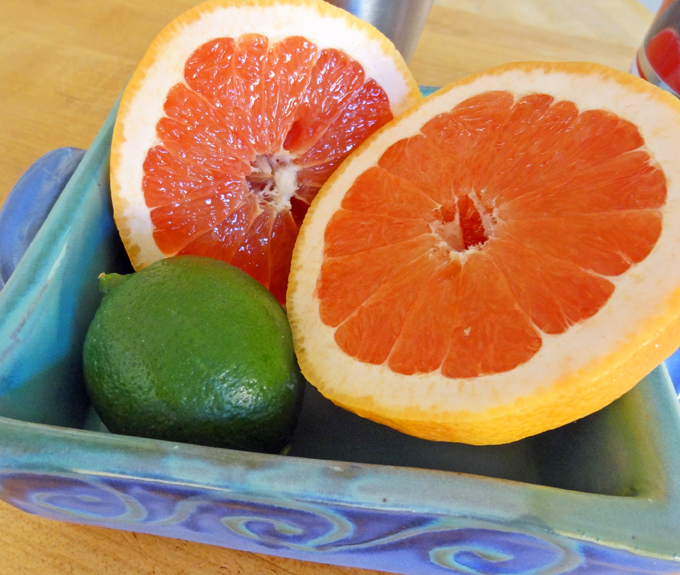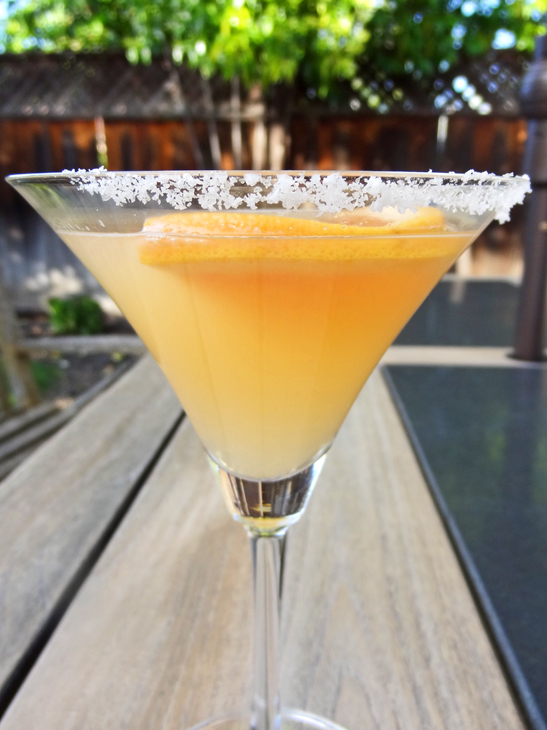Cinco de Mayo, your annual excuse to drink too many margaritas, is coming up on Monday — although some of you over-achievers might be getting a head start this weekend (in that case: rock on witcha bad selves). You know I love my margaritas, but this year I’m celebrating by shaking things up with another classic Mexican cocktail: the Paloma.

What is a Paloma? And Why, might you ask, am I breaking tradition from my beloved hand-made margarita? It’s a story that’s part inspiration and part economic practicality.
As the New York times informed us back in March, there is indeed a lime shortage. If you’ve started shopping for limes for your Cinco de Mayo celebration, you might have noticed that they’re teeny and pricier than usual. NYT writer David Karp broke it down to trio of problems: “[t]he culprits are weather, disease and even Mexican criminals.” The US relies on Mexico for much of its year-round lime supply, so with multiple issues reducing the availability of limes and sending prices higher, the effects have trickled down to our local markets.
During recent trips to Sigona’s and Whole Foods markets, I saw a paltry selection of Mexican limes that were the size of Key limes and almost as expensive. And yet, there’s still an abundance of other citrus varieties grown right here in California, some of it even within 100 miles of the 650 (Meyer lemons and mandarin oranges are just a couple of examples). Among this plethora of pretty citrus are California ruby grapefruits.

Although we’re nearing the end of the season, rubies are sweeter now than earlier in the season, readily available in the market, and they’re a good value (more fruit per pound and at a better price than the teeny-tiny Mexican limes.) Yes, I love my margaritas, but when life gives you not-limes, you gotta get creative.
So what about that inspiration part I mentioned? Coincidentally, a few weeks ago, I had my first-ever Paloma at One Market Restaurant in San Francisco. According to the bar menu, the ingredients are: Herradura Silver Tequila (as you might recall, my go-to tequila for margaritas), fresh squeezed grapefruit juice, soda, and lime juice. Grapefruit juice?! Not quite the Margarita I was craving, but eh, close enough. Never a fan of grapefruit, I was dubious, but figured why not? And this is why it’s good to try something new: the cocktail was delish — nicely balanced and refreshing! If I didn’t have to drive back to the 650 after dinner, I absolutely would have ordered another.
Flash forward a couple of weeks, and guess what turns up in my CSA box? Grapefruit — two of ’em (er, that would be grapefruits, then). As always, part of the fun of the CSA box is the “what am I going to do with that/those?!” game. But I’d been thinking about that Paloma I’d had at One Market, so the grapefruit question was easily answered: I have tequila, I have lime… hello, Paloma! All I needed was a recipe.
As it turns out, the classic Paloma recipe is basically grapefruit soda and tequila. Seriously. I prefer my cocktails sans bubbles, so this discovery was not making me happy. I was craving the fresh-juice Paloma I had at One Market, but with a few tweaks that would make it my own. The bubbles had to go — no soda, soda water, tonic or mineral water in my Paloma. A small amount of lime juice would add some tartness and balance the grapefruit, so the lime juice would be necessary, but not the star of the show. (Bonus, because, well, I didn’t want to be juicing bags of tiny limes all day long.) Finally, adding a little sweetness in the form of agave syrup would pull the whole drink together, smoothing out the tartness of the citrus. The only unknown was which tequila to use.
In my initial Paloma testing I went with a reposado because I wanted an added layer of flavor and complexity beyond a blanco tequila. But then I’d been thinking about a recent mezcal tasting at Loló Restaurant in the Mission and how that the sweet smokiness of a good mezcal might be an interesting pairing with the grapefruit.
If the word “mezcal” brings to mind something-like-tequila, but with a creepy-looking worm at the bottom, stop. There’s so much more to mezcal than a dead worm in the bottom of the bottle (and by the way, most quality mezcals do not contain a worm). I had my first taste of small-batch mezcal years ago when my friend Monica gave me an unlabelled, hand-painted bottle of the Oaxaca-produced spirit. The mezcal was smoky and sweet with herbal notes and that characteristic mezcal “burn” as it went down. I’ve been a fan ever since.
Mezcal is distilled from the cooked heart — the piña — of the maguey agave plant. It’s the cooking process, which involves fire roasting the piña for several days, that gives mezcal its characteristic smoky flavor. While a quarter of Mexico’s states are allowed to produce mezcal, most mezcal production takes place in Oaxaca. Recent years have seen a rise in the production of artisan/hyper-local versions of mezcal that focus on using agave plants from specific areas (for example, mountain vs. valley) and different methods of cooking the piña (steam roasted vs. fire roasted). Unaged mezcals are called “joven” (juvenile) and, like a blanco tequila, are clear spirits. The amount of smoky flavor in the mezcal will determine whether you want to sip it or use it for cocktails.
After what we like to call “serious research” around here (read: multiple cocktail and mezcal tastings), Mina Real Silver mezcal turned out to be the best choice for my Paloma.

Rather than the traditional in-ground fire roasting, Mina Real Silver is steam-roasted, which results in less smoke than mezcals produced by fire roasting the piña. On the nose, this mezcal is equal parts smoke, floral notes, and agave sweetness. It’s a nice pairing with the bright citrus combination of ruby grapefruit and lime. This drink is best served martini-style, rather than over ice, to fully enjoy the flavors. Give it a try!
Happy Cinco de Mayo! How are you celebrating this year?
Recipe: My Paloma
You’ll need a martini glass, cocktail shaker, shot glass with measurement markings or measuring spoons, and ice.
Ingredients:
2 oz freshly squeezed ruby grapefruit juice
½ oz freshly squeezed lime juice
2 oz Mina Real Mezcal
½ teaspoon agave syrup
For the glass:
Wedge of grapefruit
3-4 Tbs Kosher salt
Note that I’ve given the ingredients in ounces. If you’re using measuring spoons,
2 oz = 4 tablespoons, ½ oz = 1 tablespoon
How To:
- Pour salt on to a saucer. Run a wedge of grapefruit around the rim of the glass, then turn the glass upside down and dip into the salt. (You’re trying to get the salt to adhere to the outer rim of the glass). Set aside.
- Combine ingredients in a cocktail shaker with four or five cubes of fresh ice.
- Shake 4-5 times (not vigorously) to combine and pour into a prepared glass.
- Garnish with half a grapefruit wheel.
Tequila version: As I mentioned in an earlier post, I happen to be a fan of San Francisco-based Tres Agaves Tequila. If you want to try a tequila-based Paloma, substitute Tres Agaves Reposado for the Mina Real Silver mezcal.
(*To the tune of “My Sharona,” by The Knack.)


Great blog, Anni! Will definitely try this recipe.
Thanks Heidi! Let me know what you think of the Paloma.